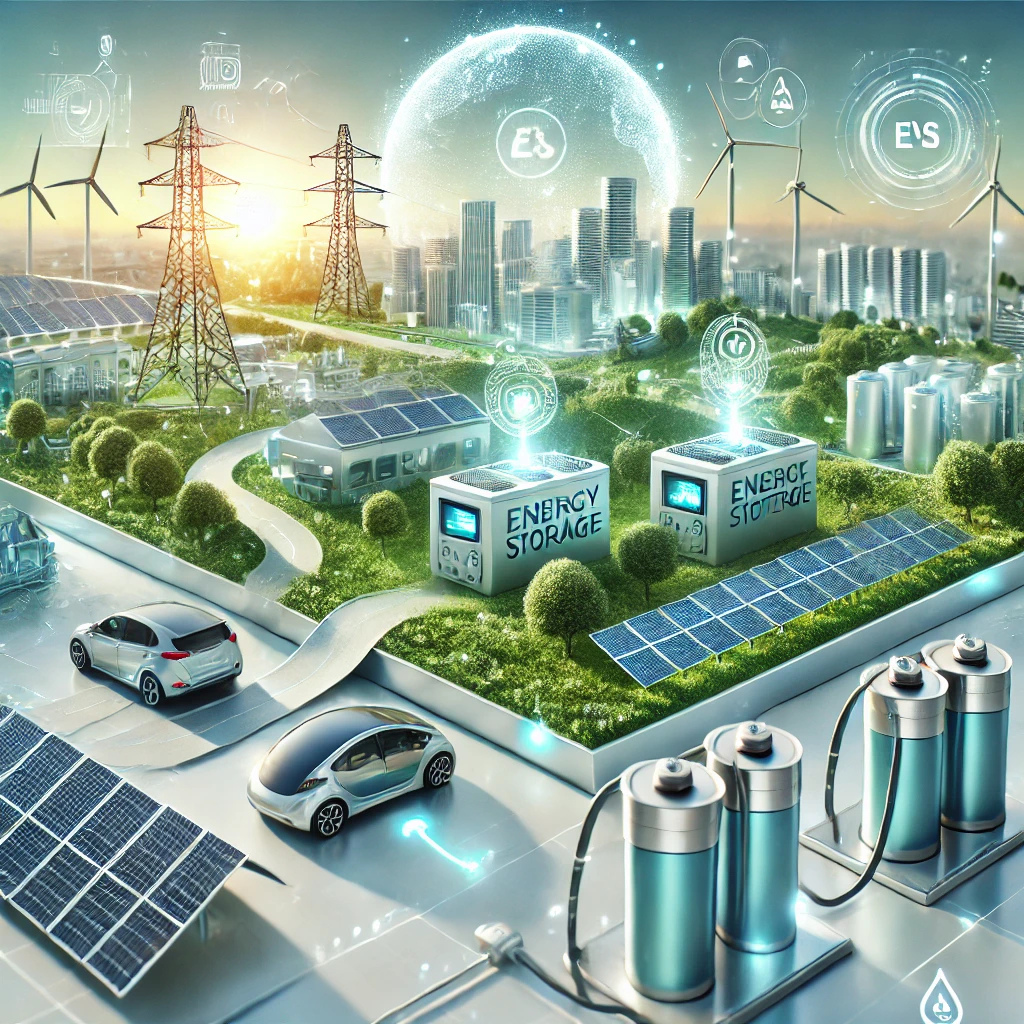Introduction
As the world pivots towards renewable energy, engineering solutions are playing a pivotal role in addressing the challenges associated with integrating clean power into existing infrastructures. Sustainable energy storage and advanced battery technologies are emerging as key enablers of this transition, offering a robust framework to store, manage, and distribute renewable energy efficiently. This shift is essential for balancing supply and demand, reducing reliance on fossil fuels, and fostering a cleaner, more sustainable future.
The Role of Energy Storage in Renewable Integration
Energy generation fluctuates throughout the day and seasons, posing challenges for grid stability. Here, energy storage systems (ESS) come into play, ensuring that excess energy produced during peak hours can be stored and released when demand outpaces generation. Technologies such as lithium-ion batteries, flow batteries, and solid-state batteries are increasingly deployed in large-scale applications, helping integrate renewable power into the grid and enhancing energy reliability.
For instance, lithium-ion batteries are widely used for grid-scale storage, leveraging their high energy density, efficiency, and relatively low cost. However, as demand grows, the engineering community is exploring more sustainable and advanced alternatives like solid-state batteries and sodium-ion batteries, which offer increased safety, higher energy densities, and improved sustainability metrics compared to their lithium-ion counterparts (Zhao et al., 2022).
Engineering Innovations in Battery Technologies
The advancement of battery technologies is essential not only for renewable integration but also for the electrification of transportation and industrial sectors. The rise of electric vehicles (EVs) has driven significant progress in battery energy storage systems (BESS), which are now being optimized for faster charging times, greater lifespan, and enhanced performance (Urooj & Nasir, 2024). For example, solid-state batteries—which use a solid electrolyte instead of liquid—are seen as a game-changer in EV technology due to their ability to store more energy in a smaller, safer package.
Flow batteries represent another innovative energy storage solution. These batteries store energy in liquid form, which allows for larger capacity storage and longer operational lifespans. Vanadium redox flow batteries are being explored for grid-scale applications due to their scalability, reliability, and the ability to discharge energy for extended periods, making them an excellent fit for balancing the energy demands of renewable grids.
Addressing the Challenges: Sustainability and Cost
While current battery technologies have made significant strides, several engineering challenges remain. One major issue is the correct materials sourcing for battery creation. Lithium, cobalt, and nickel, critical for many modern batteries, are finite resources with environmental and ethical concerns. The engineering community is focusing on alternative materials—such as sodium-ion and magnesium-based batteries—aiming to create more sustainable, cost-effective, and abundant solutions (Sayahpour et al., 2022). Furthermore, improving battery recycling processes is becoming a focal point in advancing sustainable energy storage. Engineers are developing efficient methods to recover valuable materials from spent batteries and reduce the environmental impact associated with disposal. Additionally, advancements in battery design, including solid-state technology, promise to extend the lifespan of batteries, reducing the frequency of replacement and minimizing waste.
The Future of Energy Storage: Towards a Circular Economy
The evolution of energy storage systems is closely tied to the ongoing transition to a circular economy in the energy sector. With advances in battery recycling and reusing materials, the lifecycle of batteries is being extended, creating opportunities for a closed-loop system where old batteries are repurposed into new ones. This is not only a win for sustainability but also for reducing the overall cost of energy storage solutions, making renewable energy storage more accessible to industries, utilities, and consumers alike (Noorollahi et al., 2020). Looking ahead, microgrids, smart grids, and distributed energy storage solutions will continue to integrate energy storage systems at various scales. Engineers are working on next-generation smart batteries that can communicate directly with energy management systems, enabling more efficient use of stored energy (Dai et al., 2021). As energy storage technologies mature, they will be integral in creating a grid that is more resilient, flexible, and capable of managing the complex demands of modern renewable energy systems.

Conclusion
In conclusion, the role of sustainable energy storage and battery technologies in the energy landscape cannot be overstated. As we continue to innovate in this field, the engineering community will drive forward solutions that enable large-scale integration of renewable energy, improve the performance of electric vehicles, and ensure grid reliability. The future of energy storage is intrinsically linked to advancements in engineering, and as battery technologies evolve, they will play a crucial role in achieving a cleaner, more sustainable world. By overcoming current challenges and embracing cutting-edge innovations, we can pave the way for a greener and more efficient energy future.
References
- Dai, H., Jiang, B., Hu, X., Lin, X., Wei, X., & Pecht, M. (2021). Advanced battery management strategies for a sustainable energy future. Multilayer design concepts and research trends. Renewable and Sustainable Energy Reviews, 138, 110480.
- Noorollahi, Y., Golshanfard, A., Aligholian, A., Ivatloo, B. M., Nielsen, S., & Hajinezhad, A. (2020). Sustainable Energy System Planning.for an Industrial Zone by Integrating Electric Vehicles as Energy Storage. Journal of Energy Storage, 30, 101553.
- Sayahpour, B., Hirsh, H., Parab, S., Nguyen, L. H. B., Zhang, M., & Meng, Y. S. (2022). Design of cathode materials for sustainable sodium-ion batteries. MRS Energy & Sustainability, 9.
- Urooj, A., & Nasir, A. (2024). Review of Hybrid Energy Storage Systems. for Hybrid Electric Vehicles. World Electric Vehicle Journal, 15(8), 342–342.
- Zhao, L., Zhang, T., Li, W., Li, T., Zhang, L., Zhang, X., & Wang, Z. (2022). Engineering of sodium-ion batteries. Opportunities and challenges. Engineering, 24.